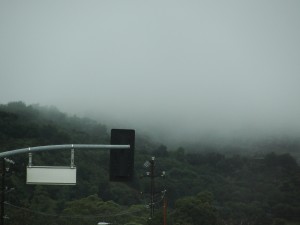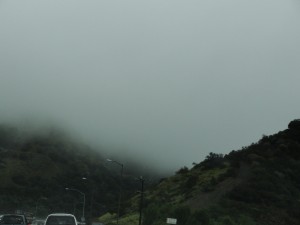
photo credit: Chris Doolittle
Firefighters in California have adopted a fire suppression policy for over a century now, which works very effectively in the underbrush type fires of Northern California, but do very little to stop the brush type fires of Southern California. In fact, wildfires are still occurring increasingly year after year, with over 99% of the ones in coastal Southern California started by human activity. It’s not just an issue of how we fight the fires; it’s how we prepare ourselves to prevent the fires.
Much of the problem arises with urban sprawl. As our communities push further out into the undeveloped land surrounding us, we not only put ourselves at risk of being in the path of a wildfire, we are more in danger of starting them. Since fires are something humans feel they can control, more or less, there is often a misconception that we can just stop the unwanted ones from happening. However, that is not the case, especially since our homes are teeming with highly flammable materials, including the very palm trees swaying our backyards. Fires are bound to break out, whether caused by humans or nature.
So, we should follow Dr. Jon E. Keeley’s advice: think of wildfires like we do of earthquakes. We certainly don’t go around trying to patch up the San Andreas Fault, and neither should we try to stop all the brushfires from igniting. As a matter of fact, in a study conducted by Keeley and Fotheringham in 2000, they found that chaparrals (native plants in Southern California) need periodic wildfires to help their seedlings grow! It’s actually the smoke and chemicals from charred wood that allow the seeds of chaparral to germinate, otherwise they lay dormant.
Chapparals have adapted to the wildfires that swept the area every decade or two and now need them to continue to survive. That’s not to say that the increased frequency of wildfires is a good thing, though! When fires occur too frequently, native chaparrals die before they get a chance to recover and soon the hillsides are replaced by non-native weeds and dry vegetation. These new plants are far less resistant to burning, increasing the frequency of fires, which spread to kill off even more native plants. And thus the cycle continues, to the point that of the nine megafires (fires that burned more than 100,000 acres) in the past century, half occurred in just the last six years.
So how should we deal with the wildfires? Well, to start off with, it would be smart to NOT build homes and developments in high-risk areas, which experts have identified. Then, for those homes that are already on the fringe of wild land, clear out the vegetation in a 100-yard radius. Also, homeowners should be cognizant of the materials in and around their homes. Palm trees in particular are dangerous because they are extremely flammable. Embers flying from a burning palm tree in your yard could then ignite a fire on nearby structures. Finally, we should accept that wildfires are part of the cycle of life for our local vegetation and have a plan like we do for earthquakes.
To learn more, check out Dr. Keeley’s Oppenheim Lecture Series presentation.












